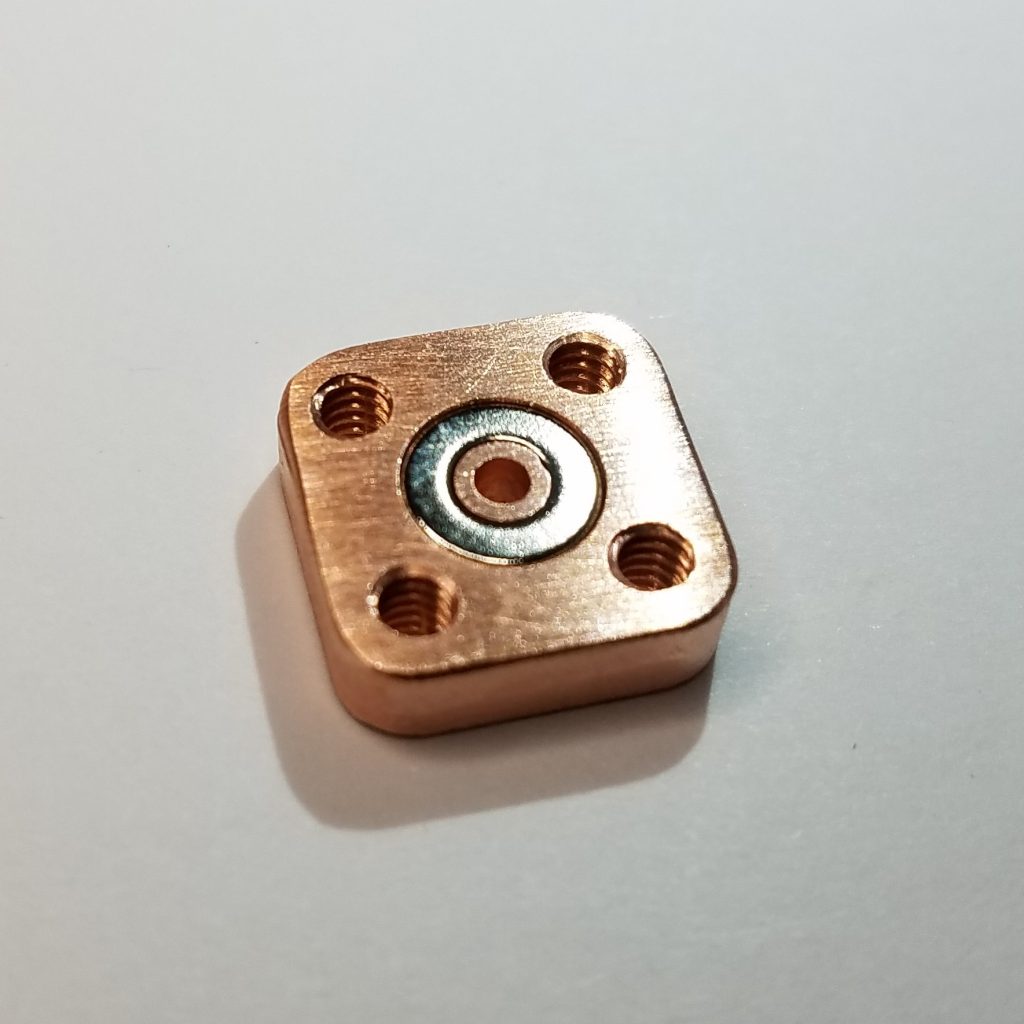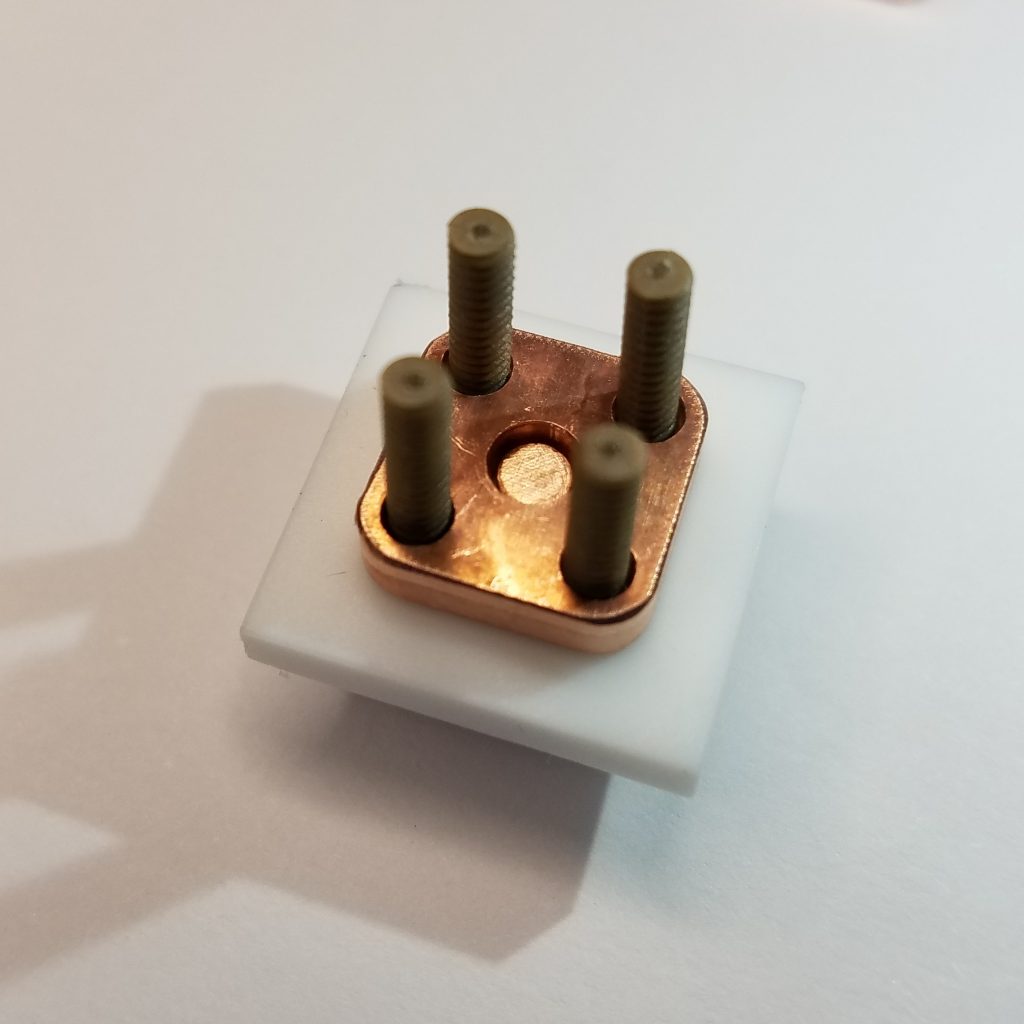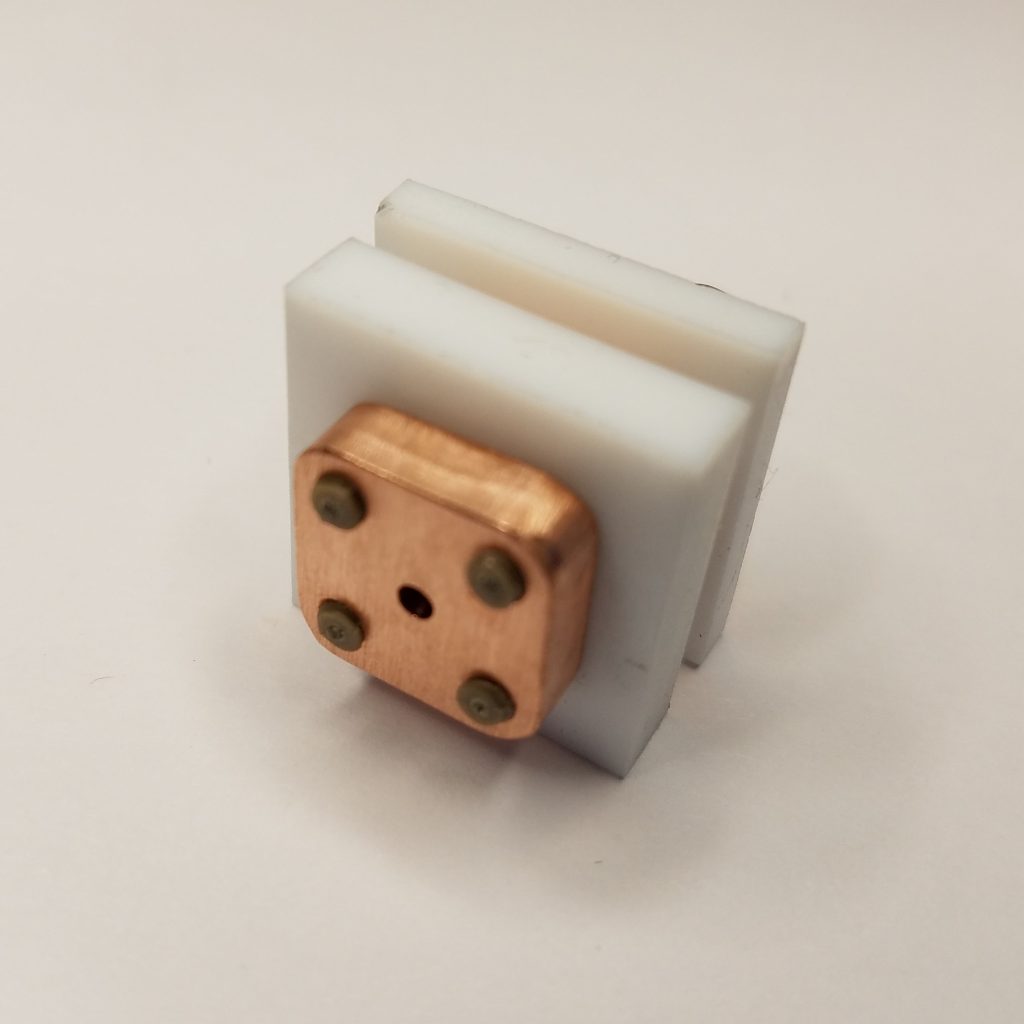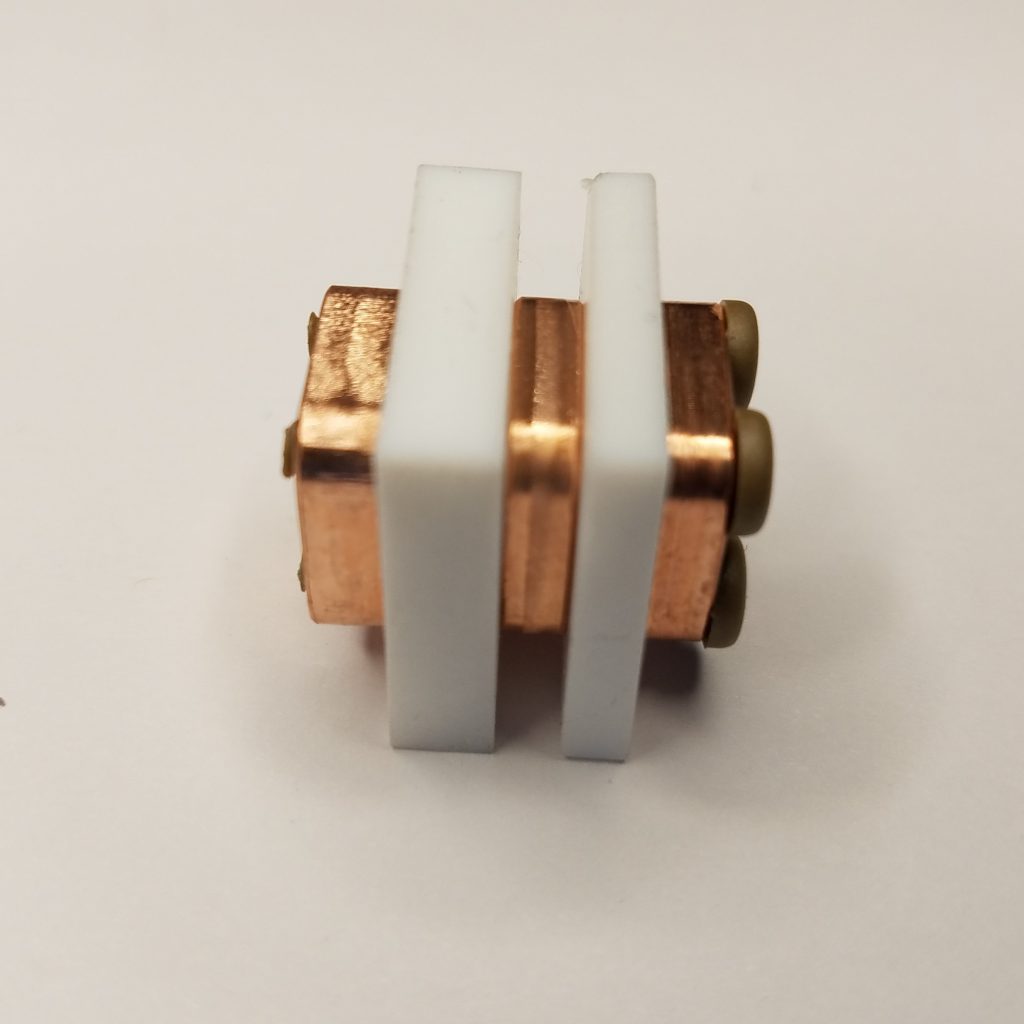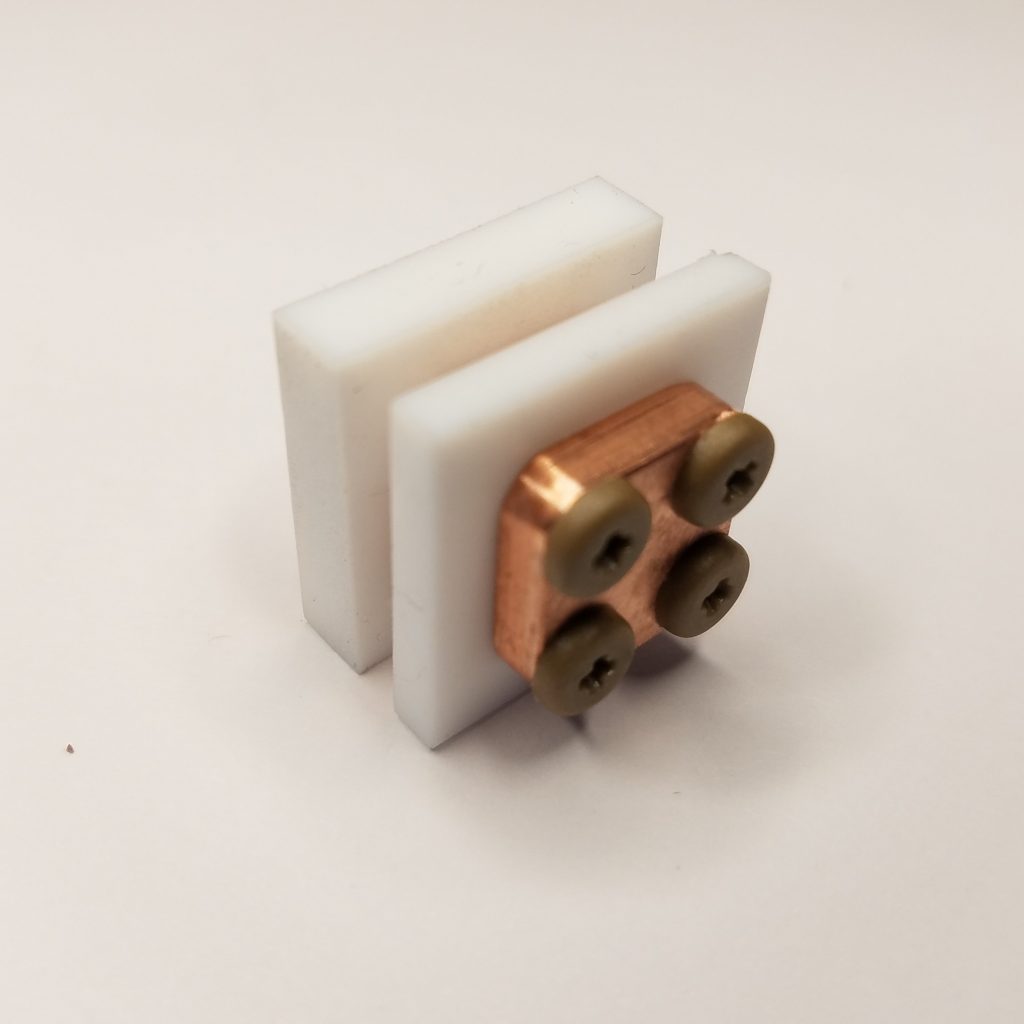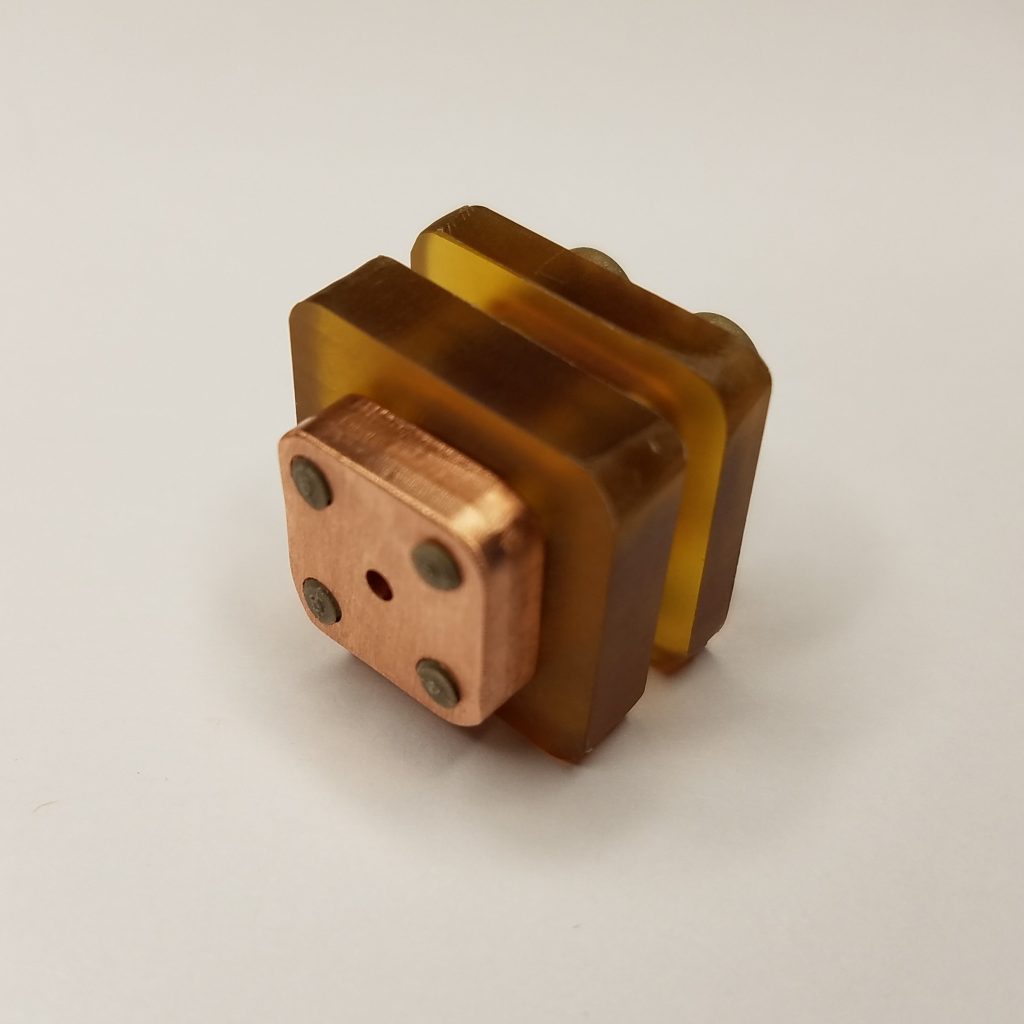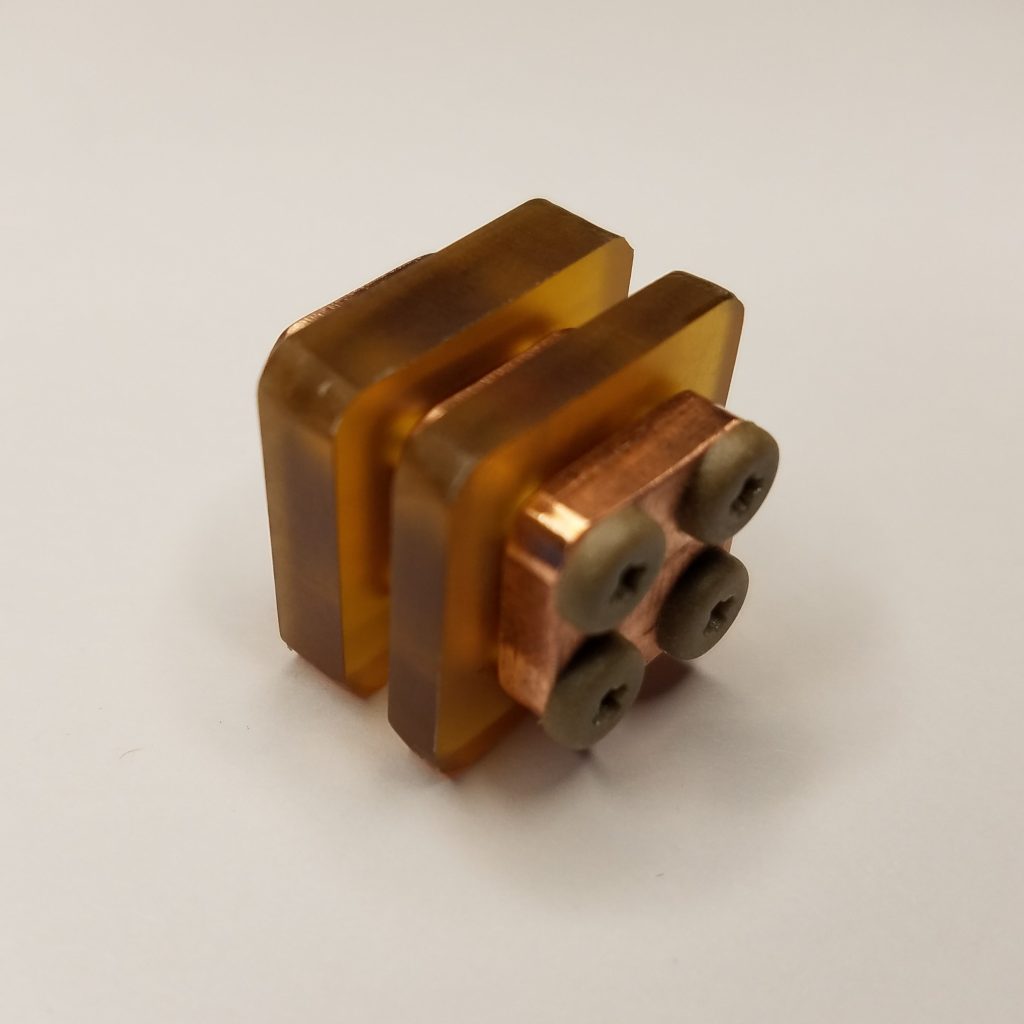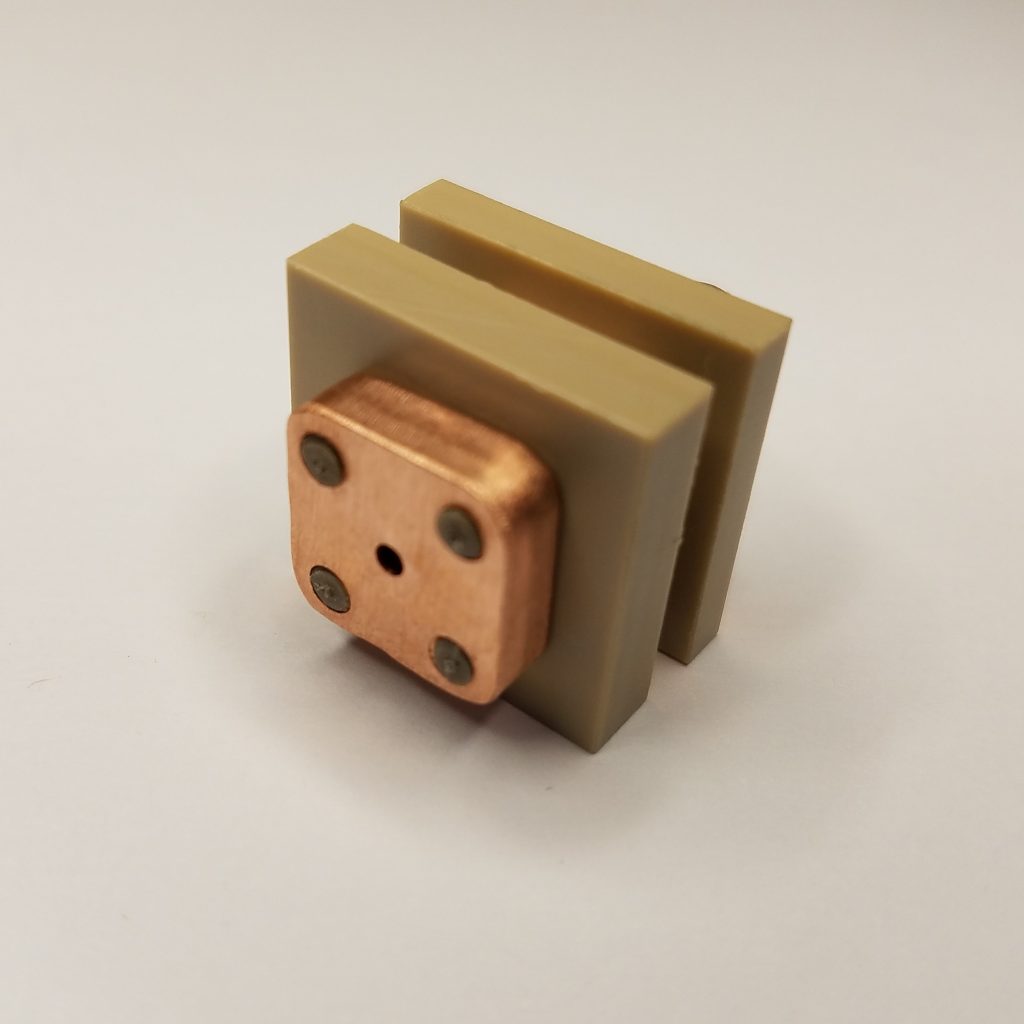Exciting news for the propulsion developments at Applied Ion Systems! Last week, for the first time, I released pictures of the newest line of pulsed plasma thrusters, fully assembled and ready for integration with the electronics I have posted on recently – the AIS-gPPT3-1C!
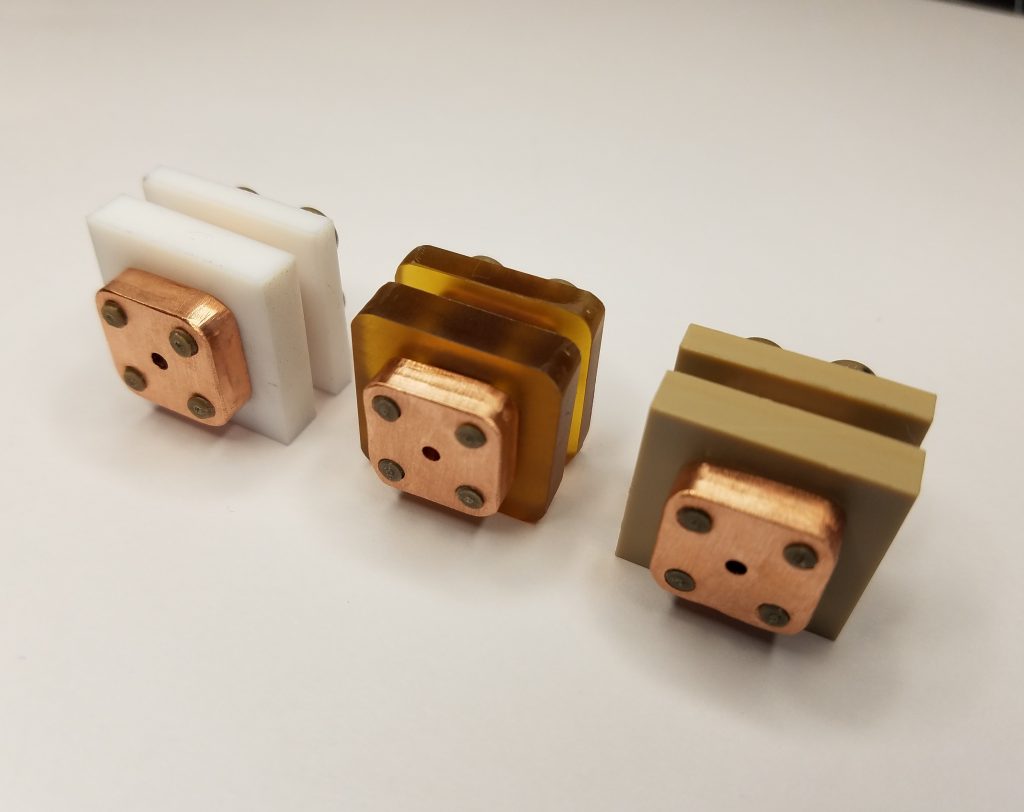
I have been building up to these thrusters for a while now, and after a couple months of work, they are finally ready. As mentioned in prior posts, this thruster comes in three flavors: classic Teflon fuel, Ultem, and PEEK. A fourth fuel will be tested, Bismuth-Tin, if the first three pass successful ignition testing. In addition to new fuels never before tried at the ultra-low energy, sub-Joule level for PPTs, this thruster will also explore the use of a permanent embedded magnetic nozzle to enhance thrust, as it operates in an electrothermal mode.
Some additional shots of each of the thruster variants. Each thruster version has its own designation based on the fuel. AIS-gPPT3-1C-T for Teflon fueled, AIS-gPPT3-1C-U for Ultem fueled, and AIS-gPPT3-1C-P for PEEK fueled:
These thrusters, as can be seen, are incredibly simple in construction and design, making them very low-cost and easy to assemble. The thrusters can be directly mounted to the electronics board, with only a couple of external wires soldered to the top anode plate and middle igniter plate for connection. Efforts are currently underway for the first high vacuum ignition testing of the fully integrated propulsion module with the thruster and electronics! My hopes are to continue to further optimize and refine these thrusters for reliable operation and long lifetime, providing the first ever thrusters specifically designed for PocketQube-class satellites on the market, and fully open source as well! These thrusters will also open up the opportunity for new data in the field for ultra-low energy sub-joule micro PPTs not yet explored before. More exciting developments to come very soon!




